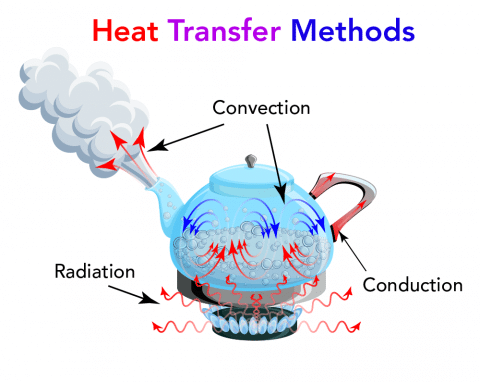
如果你也在 怎样代写热力学Thermodynamics 这个学科遇到相关的难题,请随时右上角联系我们的24/7代写客服。热力学Thermodynamics是物理学的一个分支,涉及热、功和温度,以及它们与能量、熵以及物质和辐射的物理特性的关系。这些数量的行为受热力学四大定律的制约,这些定律使用可测量的宏观物理量来传达定量描述,但可以用统计力学的微观成分来解释。热力学适用于科学和工程中的各种主题,特别是物理化学、生物化学、化学工程和机械工程,但也适用于其他复杂领域,如气象学。
热力学Thermodynamics从历史上看,热力学的发展源于提高早期蒸汽机效率的愿望,特别是通过法国物理学家萨迪-卡诺(1824年)的工作,他认为发动机的效率是可以帮助法国赢得拿破仑战争的关键。苏格兰-爱尔兰物理学家开尔文勋爵在1854年首次提出了热力学的简明定义,其中指出:”热力学是关于热与作用在身体相邻部分之间的力的关系,以及热与电的关系的课题。” 鲁道夫-克劳修斯重述了被称为卡诺循环的卡诺原理,为热学理论提供了更真实、更健全的基础。他最重要的论文《论热的运动力》发表于1850年,首次提出了热力学的第二定律。1865年,他提出了熵的概念。1870年,他提出了适用于热的维拉尔定理。
热力学Thermodynamics代写,免费提交作业要求, 满意后付款,成绩80\%以下全额退款,安全省心无顾虑。专业硕 博写手团队,所有订单可靠准时,保证 100% 原创。最高质量的热力学Thermodynamics作业代写,服务覆盖北美、欧洲、澳洲等 国家。 在代写价格方面,考虑到同学们的经济条件,在保障代写质量的前提下,我们为客户提供最合理的价格。 由于作业种类很多,同时其中的大部分作业在字数上都没有具体要求,因此热力学Thermodynamics作业代写的价格不固定。通常在专家查看完作业要求之后会给出报价。作业难度和截止日期对价格也有很大的影响。
avatest™帮您通过考试
avatest™的各个学科专家已帮了学生顺利通过达上千场考试。我们保证您快速准时完成各时长和类型的考试,包括in class、take home、online、proctor。写手整理各样的资源来或按照您学校的资料教您,创造模拟试题,提供所有的问题例子,以保证您在真实考试中取得的通过率是85%以上。如果您有即将到来的每周、季考、期中或期末考试,我们都能帮助您!
在不断发展的过程中,avatest™如今已经成长为论文代写,留学生作业代写服务行业的翘楚和国际领先的教育集团。全体成员以诚信为圆心,以专业为半径,以贴心的服务时刻陪伴着您, 用专业的力量帮助国外学子取得学业上的成功。
•最快12小时交付
•200+ 英语母语导师
•70分以下全额退款
想知道您作业确定的价格吗? 免费下单以相关学科的专家能了解具体的要求之后在1-3个小时就提出价格。专家的 报价比上列的价格能便宜好几倍。
我们在物理Physical代写方面已经树立了自己的口碑, 保证靠谱, 高质且原创的物理Physical代写服务。我们的专家在热力学Thermodynamics代写方面经验极为丰富,各种热力学Thermodynamics相关的作业也就用不着说。

物理代写|热力学代写Thermodynamics代考|Transferring availability with heat transfer processes
You can move availability into or out of a system using heat transfer. In a heat transfer process, only a portion of the energy in a heat transfer process at a system boundary temperature $(T)$ can be transferred as availability. The amount of energy that doesn’t transfer in as avallability becomes an irreversibility in the system. This irreversibility occurs because not all heat transfer to a system can be converted into useful work. Some heat must be rejected to the ambient environment surrounding the system.
In theory, it’s possible to use a heat engine to produce useful work from the heat that’s rejected by a system to the environment. But even a heat engine has to reject some heat, so you can never completely get out of rejecting heat by producing useful work. In practice, replacing a heat rejection process with a heat engine usually isn’t cost-effective if the availability is relatively low compared to the dead state.
The portion of availability transferred in a system by heat, $A_{\text {heat }}$ at a boundary temperature $T$ in an environment at $T_0$ is calculated with this equation:
$$
A_{\text {heat }}=\left(1-\frac{T_0}{T}\right) Q
$$
Availability and heat move in or out of a system in the same direction as long as the temperature of the boundary is above the dead state temperature. If the system boundary temperature is below the dead state temperature, the availability transfers in the opposite direction of heat transfer.
Transferring availability with mass flow Mass flows through an open system, so it can move energy, entropy, and availability into or out of the system. The rate of total availability $\left(\dot{A}_{\max }\right)$ that’s transferred into or out of a system is calculated by the mass flow rate $(m)$ and the flow availability $\left(a_l\right)$, as shown in this equation: $\dot{A}{\text {mass }}=\dot{m} a{f .}$
For a closed system, there is no mass flow so there’s no transfer of availability by mass transfer, but the total availability $(A)$ in the system is calculated using the mass of the system $(m)$ and the specific availability $(a)$, as shown by the equation $A=m a$.
物理代写|热力学代写Thermodynamics代考|Understanding the Decrease in Availability Principle
The first law of thermodynamics states that energy cannot be created or destroyed but can only change form. This means that energy is a conserved property. In any system, the energy that goes into a system equals the energy that leaves and accumulates in the system. Energy may enter as a form of heat and leave as a form of work, as it does in a heat engine. Mass has similar qualities: The mass entering a system equals the mass leaving and accumulating in the system, even if it changes phase from a liquid to a gas.
Entropy and availability are not conserved properties like energy and mass. In Chapter 8 , I discuss the increase in entropy principle, whereby every process in a system causes entropy to increase from the perspective of the universe. Locally, you may cause entropy to decrease in a system by lowering its temperature or raising its pressure. But the result of entropy decreasing within a system is a proportionately greater increase in the entropy of the system’s surroundings. The net effect of entropy changes to the system and its surroundings is that entropy always increases.
The nature of availability is that it diminishes as it’s used to do work or provide heat. The inlet conditions of a thermodynamic process require highquality energy relative to the avallability at the outlet conditions, meaning the inlet conditions must have sufficient availability to perform the process. At the outlet of a work process, the availability has decreased such that it can’t do as much work as it could before the process.
You may locally increase the availability of energy by adding heat, work, or mass into a process, but the avallability of the source of heat, work, or mass decreases by supplying energy to the process. Globally, the decrease in availability is similar to the global increase in entropy. Eventually, the universe will have no availability for performing useful work. Irreversibility caused by heat transfer, friction, mixing, and so forth destroys availability and generates entropy. The destruction of availability, $A_{\text {destroyed }}$ is proportional to entropy generation, $S_{\mathrm{gen}}$, as shown in this equation: $A_{\text {destroyed }}=T_0 S_{\mathrm{gen}}$.

热力学代写
物理代写|热力学代写Thermodynamics代考|Transferring availability with heat transfer processes
您可以使用热传递将可用性移入或移出系统。在传热过程中,在系统边界温度$(T)$处的传热过程中,只有一部分能量可以作为可用性传递。没有作为可用性传递进来的能量在系统中变成了不可逆性。这种不可逆性的发生是因为并不是所有传递给系统的热量都能转化为有用的功。一些热量必须排出到系统周围的环境中。
从理论上讲,利用热机将系统排出的热量释放到环境中产生有用的功是可能的。但是即使是热机也要排出一些热量,所以你不可能完全通过产生有用功来排出热量。在实践中,如果可用性相对较低,则用热机代替热排除过程通常不具有成本效益。
可用性在系统中通过热量传递的部分,$A_{\text {heat }}$在边界温度$T$下,在$T_0$的环境中,用以下公式计算:
$$
A_{\text {heat }}=\left(1-\frac{T_0}{T}\right) Q
$$
只要边界温度高于死态温度,可用性和热量就以同一方向进出系统。如果系统边界温度低于死态温度,则可用性的传递方向与热传递方向相反。
质量在开放系统中流动,因此它可以将能量、熵和可用性移进或移出系统。由质量流率$(m)$和流量可用性$\left(a_l\right)$计算出系统的总可用性$\left(\dot{A}_{\max }\right)$,如下式所示: $\dot{A}{\text {mass }}=\dot{m} a{f .}$
对于一个封闭系统,没有质量流,所以没有通过质量传递传递可用性,但是系统中的总可用性$(A)$是使用系统的质量$(m)$和特定可用性$(a)$来计算的,如公式$A=m a$所示。
物理代写|热力学代写Thermodynamics代考|Understanding the Decrease in Availability Principle
热力学第一定律指出,能量不能被创造或毁灭,只能改变形式。这意味着能量是一种守恒性质。在任何系统中,进入系统的能量等于离开系统并在系统中积累的能量。能量可能以热的形式进入,而以功的形式离开,就像在热机中那样。质量也有类似的性质:进入系统的质量等于离开系统并在系统中积累的质量,即使它从液体变为气体。
熵和有效性不像能量和质量那样是守恒的。在第8章中,我讨论了熵的增加原理,即从宇宙的角度来看,系统中的每个过程都会导致熵的增加。局部地,你可以通过降低系统的温度或提高系统的压强来减少系统的熵。但是系统内部熵减少的结果是系统周围环境的熵成比例地增加。熵变对系统及其周围环境的净影响是熵总是增加的。
可用性的本质是当它用来做功或提供热量时,它会减少。热力学过程的入口条件相对于出口条件的可用性需要高质量的能量,这意味着入口条件必须有足够的可用性来执行该过程。在工作流程的出口,可用性已经降低,因此它不能像流程之前那样做尽可能多的工作。
你可以通过在过程中增加热量、功或质量来局部地增加能量的可用性,但是通过向过程提供能量来减少热量、功或质量的来源的可用性。在全球范围内,可用性的减少与熵的增加相似。最终,宇宙将没有可用性来执行有用的工作。由热传递、摩擦、混合等引起的不可逆性破坏了可用性并产生熵。可用性的破坏,$A_{\text {destroyed }}$与熵的产生,$S_{\mathrm{gen}}$成正比,如这个等式所示:$A_{\text {destroyed }}=T_0 S_{\mathrm{gen}}$。

物理代写|热力学代写Thermodynamics代考 请认准UprivateTA™. UprivateTA™为您的留学生涯保驾护航。
微观经济学代写
微观经济学是主流经济学的一个分支,研究个人和企业在做出有关稀缺资源分配的决策时的行为以及这些个人和企业之间的相互作用。my-assignmentexpert™ 为您的留学生涯保驾护航 在数学Mathematics作业代写方面已经树立了自己的口碑, 保证靠谱, 高质且原创的数学Mathematics代写服务。我们的专家在图论代写Graph Theory代写方面经验极为丰富,各种图论代写Graph Theory相关的作业也就用不着 说。
线性代数代写
线性代数是数学的一个分支,涉及线性方程,如:线性图,如:以及它们在向量空间和通过矩阵的表示。线性代数是几乎所有数学领域的核心。
博弈论代写
现代博弈论始于约翰-冯-诺伊曼(John von Neumann)提出的两人零和博弈中的混合策略均衡的观点及其证明。冯-诺依曼的原始证明使用了关于连续映射到紧凑凸集的布劳威尔定点定理,这成为博弈论和数学经济学的标准方法。在他的论文之后,1944年,他与奥斯卡-莫根斯特恩(Oskar Morgenstern)共同撰写了《游戏和经济行为理论》一书,该书考虑了几个参与者的合作游戏。这本书的第二版提供了预期效用的公理理论,使数理统计学家和经济学家能够处理不确定性下的决策。
微积分代写
微积分,最初被称为无穷小微积分或 “无穷小的微积分”,是对连续变化的数学研究,就像几何学是对形状的研究,而代数是对算术运算的概括研究一样。
它有两个主要分支,微分和积分;微分涉及瞬时变化率和曲线的斜率,而积分涉及数量的累积,以及曲线下或曲线之间的面积。这两个分支通过微积分的基本定理相互联系,它们利用了无限序列和无限级数收敛到一个明确定义的极限的基本概念 。
计量经济学代写
什么是计量经济学?
计量经济学是统计学和数学模型的定量应用,使用数据来发展理论或测试经济学中的现有假设,并根据历史数据预测未来趋势。它对现实世界的数据进行统计试验,然后将结果与被测试的理论进行比较和对比。
根据你是对测试现有理论感兴趣,还是对利用现有数据在这些观察的基础上提出新的假设感兴趣,计量经济学可以细分为两大类:理论和应用。那些经常从事这种实践的人通常被称为计量经济学家。
MATLAB代写
MATLAB 是一种用于技术计算的高性能语言。它将计算、可视化和编程集成在一个易于使用的环境中,其中问题和解决方案以熟悉的数学符号表示。典型用途包括:数学和计算算法开发建模、仿真和原型制作数据分析、探索和可视化科学和工程图形应用程序开发,包括图形用户界面构建MATLAB 是一个交互式系统,其基本数据元素是一个不需要维度的数组。这使您可以解决许多技术计算问题,尤其是那些具有矩阵和向量公式的问题,而只需用 C 或 Fortran 等标量非交互式语言编写程序所需的时间的一小部分。MATLAB 名称代表矩阵实验室。MATLAB 最初的编写目的是提供对由 LINPACK 和 EISPACK 项目开发的矩阵软件的轻松访问,这两个项目共同代表了矩阵计算软件的最新技术。MATLAB 经过多年的发展,得到了许多用户的投入。在大学环境中,它是数学、工程和科学入门和高级课程的标准教学工具。在工业领域,MATLAB 是高效研究、开发和分析的首选工具。MATLAB 具有一系列称为工具箱的特定于应用程序的解决方案。对于大多数 MATLAB 用户来说非常重要,工具箱允许您学习和应用专业技术。工具箱是 MATLAB 函数(M 文件)的综合集合,可扩展 MATLAB 环境以解决特定类别的问题。可用工具箱的领域包括信号处理、控制系统、神经网络、模糊逻辑、小波、仿真等。